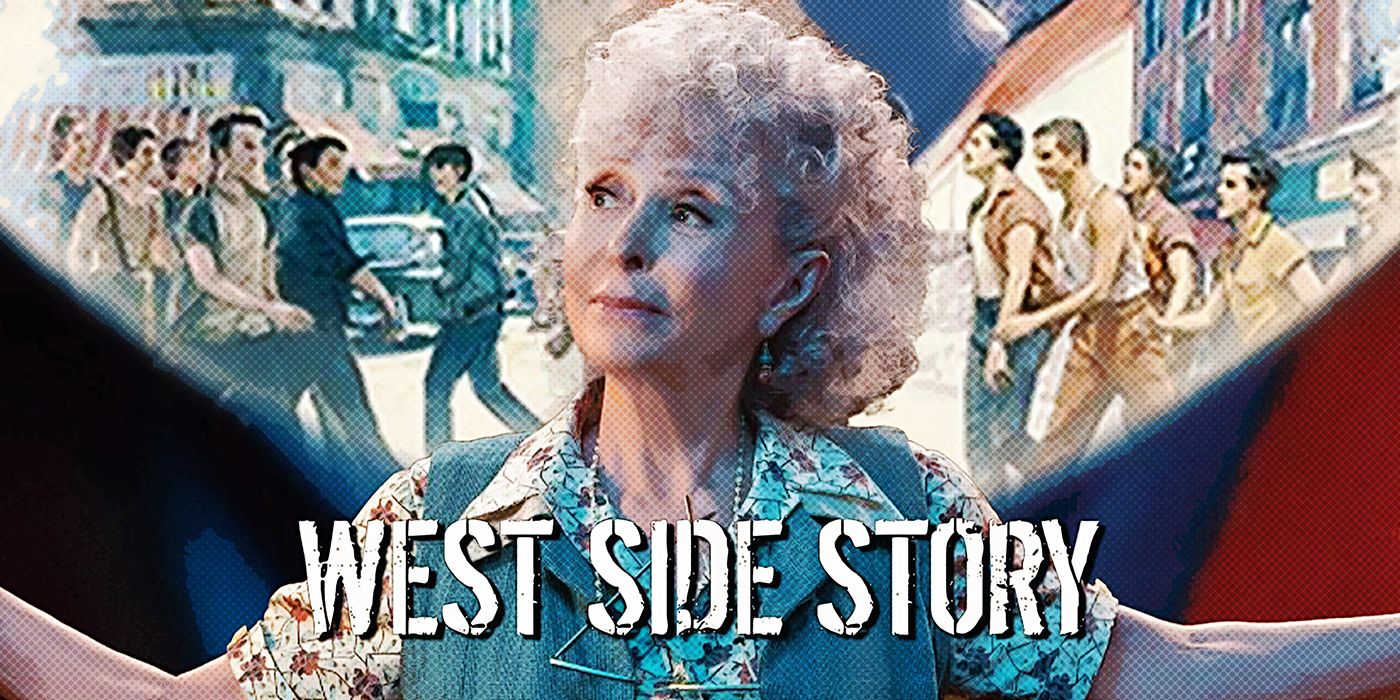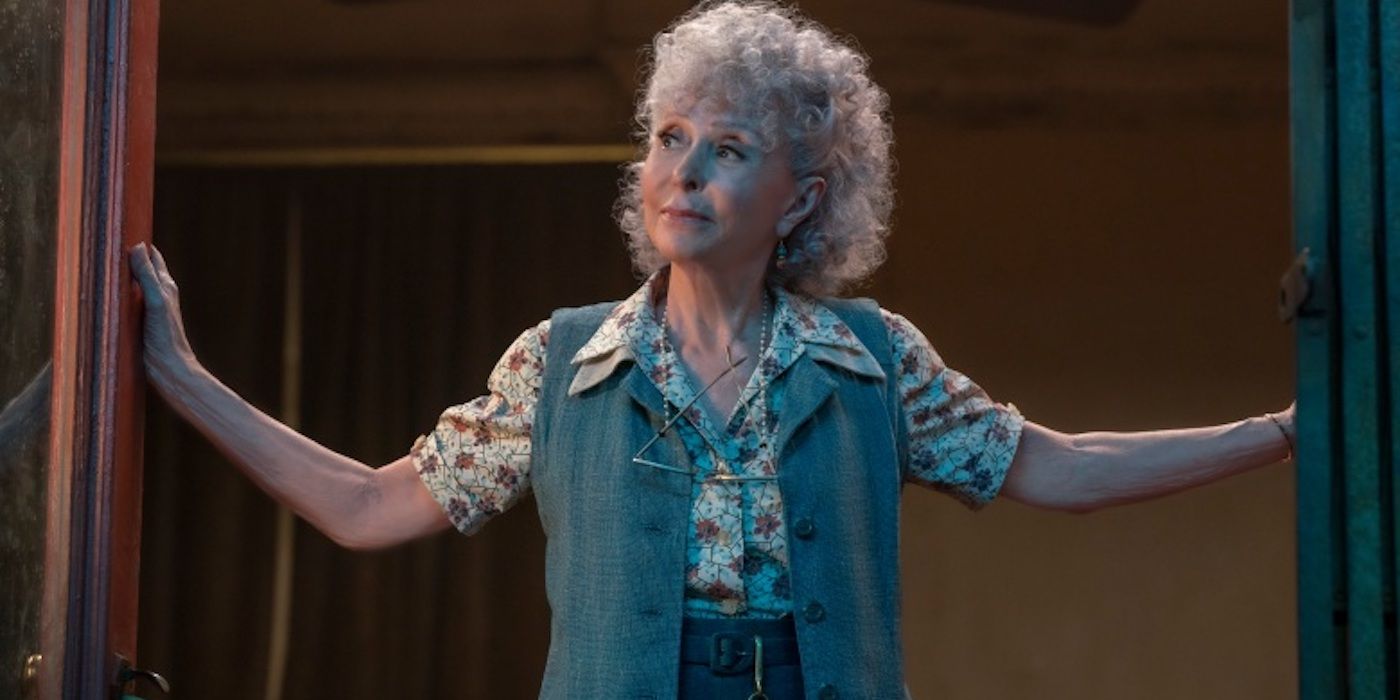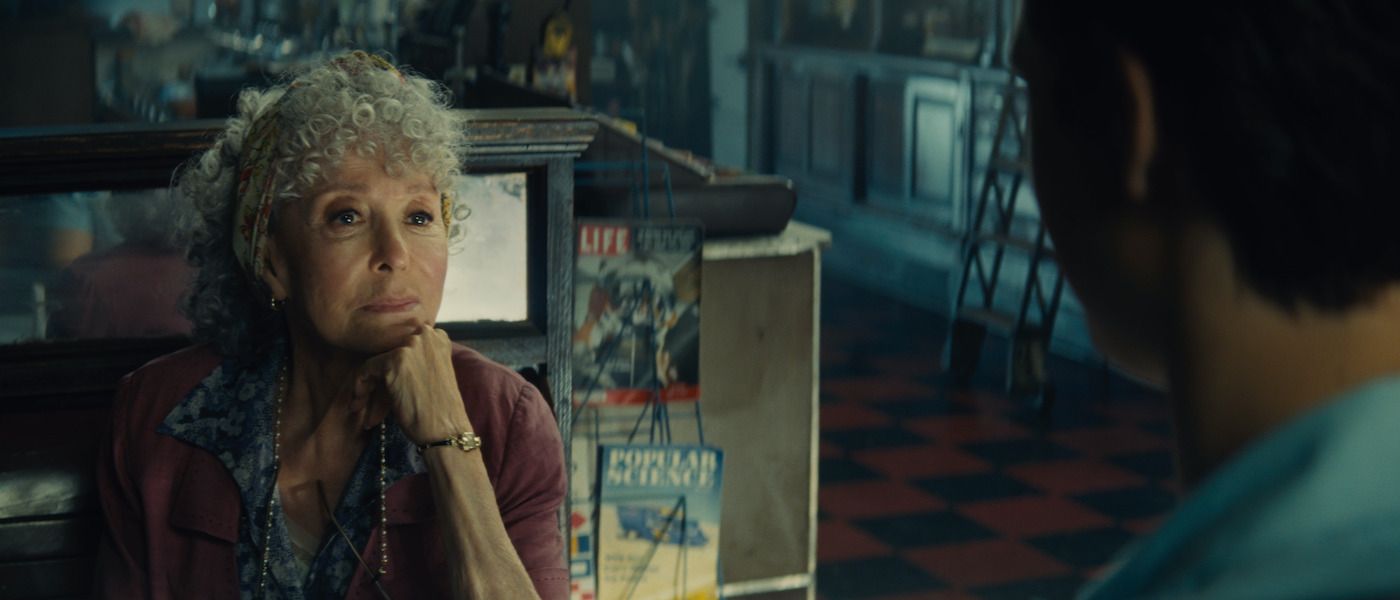When a remake of West Side Story was announced, many people questioned the need for its existence. Unconvinced frowns eventually gave way to reluctant nods when the name Steven Spielberg came attached to that announcement. When the film was finally released, much of the skepticism fizzled as Spielberg’s retelling of the classic story justified its existence with beautifully choreographed numbers and many bold changes to the material. Among these changes was a brand-new character for Rita Moreno, the iconic actress who played Anita in the original 1961 film directed by Robert Wise and Jerome Robbins. In Spielberg’s film, Moreno plays Valentina, the Hispanic widow of Doc, the eponymous drug store owner who was close friends with the Jets. As screenwriter Tony Kushner gives Moreno a new purpose in the film as Valentina, her mixed-race marriage, and her relationship to Tony (Ansel Elgort) deepen the racial commentary of the film while never overshadowing Ariana DeBose’s new interpretation of Anita.
It would have been very easy for Spielberg and Kushner to play it safe in readapting West Side Story. No one would blame them for feeling overwhelmed by the daunting task of breathing new life into a film that many already consider perfect (excluding the brownface of course). And as a matter of fact, the genesis of Valentina didn’t come from either Kushner or Spielberg. The idea was pitched to Kushner by his spouse, author Mark Harris, during a conversation about Doc’s role in the story. Along with this introduction to Valentina, Kushner and Spielberg make other changes that prove they didn’t shy away from the challenge. The film sees a newly defined location for the turf battle as well as wholly new takes for songs like “Cool” and “Somewhere.” In the case of “Cool,” what was once a call for unison among the Jets is now a plea by Tony to end the senseless violence. As for “Somewhere,” none of the lyrics are changed, but the song gains a poignant new interpretation as Valentina is given the song to sing.
Beyond the initial impact of hearing the 90-year-old Moreno sing one of the most emotionally affecting songs ever written, a woman from a mixed-race marriage singing about hopeful lovers transforms the song into a lament. Valentina is fully aware of the probability of violence stemming from Tony and Maria’s (Rachel Zegler) forbidden love, and her opportunity to sing “Somewhere” expresses this gloom as a yearning for a more tolerable future. The fact that the racial tension of the film remains so powerful 60 years after the release of the original is distressing in and of itself, and Kushner and Spielberg embrace the opportunity to relitigate those themes for all their emotional worth.
Beyond the story of the film, the new role for Moreno also carries a weight of personal significance for the actor. Another update of the film sees Valentina stopping the attack from the Jets on Anita. In the original film, Doc is the one who comes to Anita’s rescue upon seeing the assault. In Spielberg’s film, Valentina assumes that role and because of her position as an older woman amongst this gang of boys, there’s a maternal sense of disappointment that Valentina expresses as she chastises the boys she has watched grow. Moreover, Moreno has been very vocal about her own trauma both filming that scene in the original film as well as her experience with sexual harassment as a young woman in Hollywood. By giving Valentina the opportunity to call out the assault from the Jets, the film is simultaneously giving Moreno the chance to confront her own trauma, which Moreno thankfully appears open to doing. And since it was Moreno as Anita in the original film who was being assaulted by the Jets, the opportunity for Moreno to step in and, to a certain degree, save herself from the attack is equal parts empowering and heartbreaking.
Lastly, there’s a new dynamic introduced between Tony and Valentina that wasn’t present between Tony and Doc in the original film. In both films, Tony holds a job stocking shelves for the drug store, but in the 1961 film, Doc comes to see Tony almost as a son. In Spielberg’s film, Valentina’s drug store acts as a home base for Tony both physically and emotionally. It’s a place where he can express his newfound love safely, but it’s also a place where Valentina can teach him Spanish, so Tony can properly share that love with Maria. And while there certainly is a parental dynamic that Valentina has with Tony as well, it is complicated by Valentina’s own history in a mixed-race relationship.
Because of Valentina’s successful marriage to Doc, she comes to embody a tangible future Tony longs to have with Maria. The emotional precedent of their marriage makes Tony hopeful that with her guidance, he and Maria might have a chance to make it. Unfortunately for Tony, he is not aware that he is the Romeo to Maria’s Juliet, which makes his aspirations all the more tragic when their star-crossed romance inevitably ends in violence. It doesn’t take very long for Spielberg’s newest iteration of West Side Story to prove its worth. Likewise, Moreno’s reintroduction as Valentina immediately springs to life and pushes the story in a fresh direction. There’s a reason these stories keep getting told over and over again. There is always going to be someone that can come along and shine a new light on old material, can breathe new life into an aging tale, and in the case of Spielberg’s West Side Story, can elevate a film beyond perfection.
Not all may agree that every change to the material works. It’s clear that Spielberg is trying to balance each change so as not to overshadow his reverence for the original. In particular, it’s a tall order to bring back Rita Moreno without having it impact Ariana DeBose’s Anita. But Kushner and Spielberg pull it off. Each update that comes with the inclusion of Valentina in the story deepens the already dense material, and DeBose’s incredible work miraculously comes out unblemished at the same time. By the end of the film, it becomes clear that Valentina stands tall as the film’s best alteration. Between the thematic significance to the story, the personal significance to Moreno, and the aspirational significance for Tony, Valentina’s profoundly edifying presence speaks volumes to the story.



